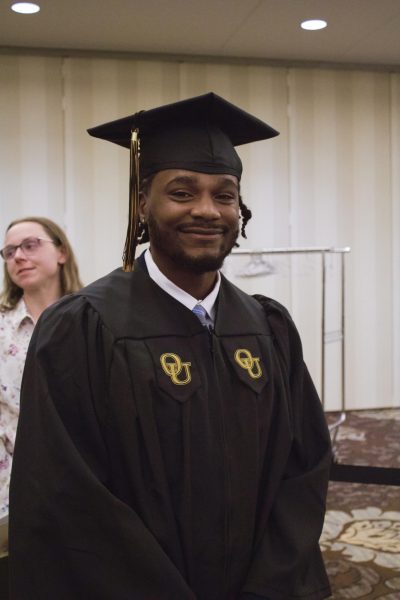Dance professor recreates lost ballet
George Balanchine, known as the father of American ballet, choreographed the ballet “Marche Funèbre” in 1923. Since then, the ballet has been considered “lost,” as it has not been performed in the last 95 years. An assistant professor of dance at Oakland University, Elizabeth Kattner, has been in the process of reconstructing the ballet, and will put on a free performance at OU on Nov. 3 from 5–7 p.m. in the Oakland Center Banquet Rooms.
“I’ve been working on it academically since 2008, and I’ve been working on it with dancers since 2011, and I’ve been working with the Grand Rapids Ballet for about a year,” Kattner said. “This ballet is the first group piece done by a master, and I believe it has all the seeds of George Balanchine’s later works.”
Kattner will be bringing history and dance together with the production of this lost ballet. A ballet is considered lost if it is not passed on from one generation to the next. Being the only person to recreate “Marche Funèbre,” Kattner has been working with the George Balanchine Trust to develop the ballet.
“I have gone to Russia, I’ve used things in many languages, it’s not the only thing I’ve been doing for ten years,” Kattner said. “But maybe I’ll be able to do one workshop with dancers, then not have the opportunity for a couple more years.”
Since there are no videos of the original dance, Kattner had to work off of a couple of photographs, the word of mouth from “School of Classical Dance” author Vera Kostrovitskaya and the description from the lead dancers of the original, Alexandra Danilova and Tamara Geva.
“It can’t be the exact same because we don’t have a video recording — no one’s written it down, it’s kind of approximate,” Kattner said. “That’s why it’s called ‘Envisioning Funeral March.’”
“Marche Funèbre” was Balanchine’s first group piece who created this ballet with a group of dancers called the Young Ballet. The ballet is eight minutes long and includes nine dancers throughout the performance. It was one of dozens he created during that era.
“This was created in St. Petersburg, Russia right after the Revolution. So, [in] those years right after the Revolution, there was a lot of chaos during that time, so a lot of the ballets that they did, they kind of did it once and then they got rid of it,” Kattner said. “There were two ballets he created during that era [that we have enough information to recreate], and one was already recreated by somebody else, and this one is the one that I chose.”
Kattner will also be producing a book based on her experience. She said the book will come out within a couple years and will be titled “(Re)Discovering Balanchine.” In the book, she will explain why people should recreate lost ballets. According to Kattner, there are people who think they should not be recreated and continue to be lost.
“It’s about the process, about being in the studio with dancers, about working in the archives, about the idea of taking textual material and putting it on dancers,” Kattner said. “I will talk about all the research I’ve done on early Balanchine, just what has been written about his early ballets and what we can get from that information.”







